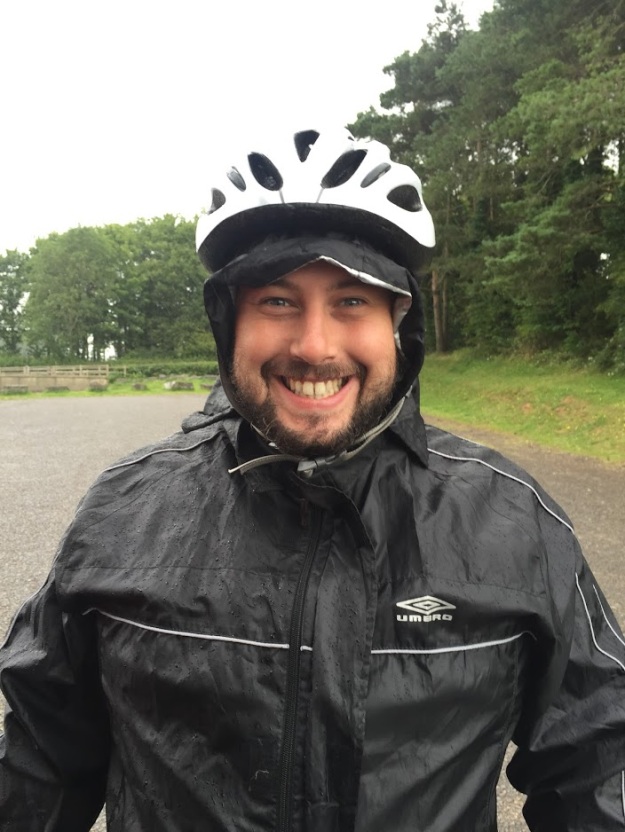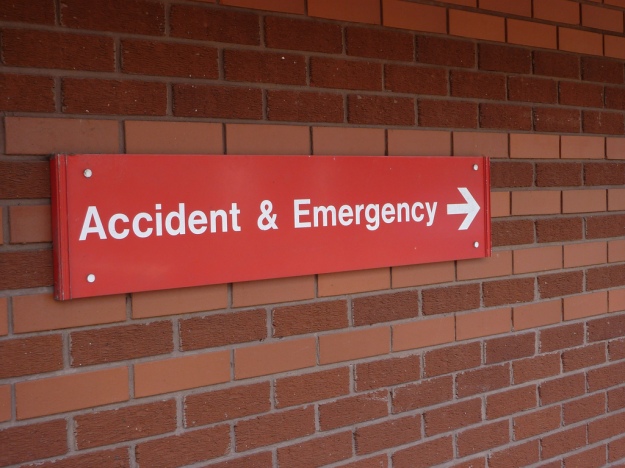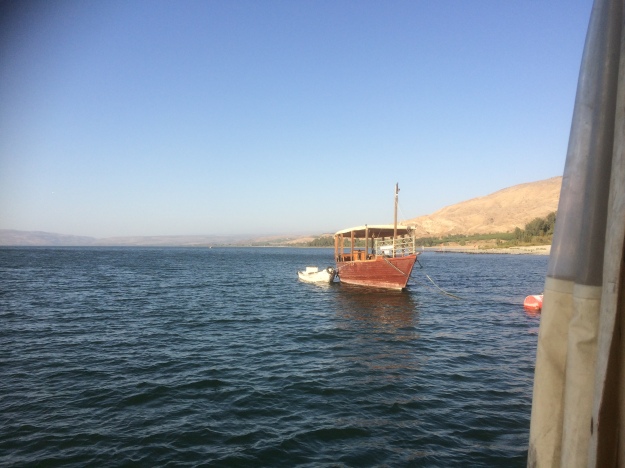When I finally caught up with the others, who had as normal hurtled down the descent from Corfe, I found them standing in a huddle on a grassy bank by the side of the road. It turned out that Scott had hit a pothole at speed on the way down and had spectacularly blown out his front tyre. This was the first puncture of the trip. We manged to fix it and get just enough air into the innertube for him to limp to first lunch which was scheduled to happen at the visitor’s centre car park at Chew Valley Reservoir.
The sky started to look threatening as we ate lunch. We munched on rolls with various appetising fillings, which Jo and Julia had prepared and my mind went back to the same holiday in Somerset during which Adam broke his wrist. My interest in angling had over the years developed beyond the type of fishing uncle Jack introduced me to on that fateful day many years previously when Dad and I bumped into him (not literally) as we rode our bikes along the towpath of the Wey Navigation Canal. Whilst I still enjoyed course fishing as it is called (so called, some argue, because of the amount of swearing involved when rod and line get tangled up or a fish is lost), I also developed an appetite for fly fishing for trout. Chew Valley Reservoir is one of the premiere trout fishing venues in the west of England. So, it was on a pleasant evening I, along with several other fly fishers, wadded into the water from a bank which gave access to a shallower area of the vast man-made lake where fly life is abundant and where the trout congregate to feed on hatching larvae. It turned out to be a productive evening for me and with a couple of nice rainbow trout in the bag I headed for the shore as dusk set in. As the water receded my waders seemed to get heavier and heavier and when I reached terra firma I noticed jets of water issuing from both legs; my waders had it turned out perished and unbeknownst to me had slowly filled up with water. The spouting waders caused much merriment to my fellow anglers and not inconsiderable embarrassment to me.
Chucking to myself about my aquatic adventure of years ago, I topped up my water bottle in preparation for part two of the day’s ride. It looked as if I was going to get wet again, this time from the top downwards rather than the bottom upwards. Sure enough, before we had all finished lunch it started to rain quite heavily, so on went the waterproofs. Well on went most of the waterproofs; Sam refused to put his on which caused Jo to have a go at him. After several attempts to get him to see reason, all of which were rebuffed, the rest of us, sensing the onset of the mother of all domestics, moved away to a safe distance. Eventually Sam decided to mount his bike in preparation to head off out of the conflict zone. “Sam,” said Jo quietly, she was ignored. “Sam,” she repeated more forcefully, he eventually lost it, yelling “I’m old enough to look after myself!” At which point Jo quietly walked up to him and handed him his cycle helmet, “helmet” she said calmly. Whilst Jo basked in a moral victory the rest of us fell about laughing. The rain persisted for a while but only just long enough for Sam to get thoughly soaked but even he had dried out by the time we got to the outskirts of Bristol.
On the 2013 ride Naomi, Ollie and myself ran into extreme navigational problems on the outskirts of Bristol. The trusted guide book didn’t seem to correlate with the geography on the ground and we had several stabs at getting onto a cycle path along the river Avon. This time, GPS made, what had seemed so difficult last time, relatively easy. Soon we were speeding along a cycle path which, due to the flat nature of the ride, enabled me to keep up with the others. Eventually we moved away from the riverside and came to the end of the cycle track at which point the nature of the ride change dramatically. We found ourselves forced onto the main drag which was used by heavy duty lorries en route to the nearby docks. This did not make for comfortable riding as the lorries thundered past, we got caught in their slip streams and were left, after they past, inhaling their noxious exhaust fumes.
After what seemed like an age, we made it to a service station where we met the support team for second lunch. Along with Julia and Jo we were greeted by Sam’s uncle Paul, Paul’s wife Lois and Sam’s grandfather Arthur resplendent in his wheel chair. It started to drizzle with rain and so Arthur decided to raise our spirits with a school boy joke which had a punch line that involved sore bums (many a true word said in jest). We all laughed politely and hoped this would not encourage him to get into a full comedy routine. “Any one for cake”, enquired Lois. This timely distraction saved us from further octogenarian humour. And so, fuelled up for the next leg of the adventure, we headed off towards the Welsh boarder, naturally as it always seems to do, it was raining as we approached the Principality.



